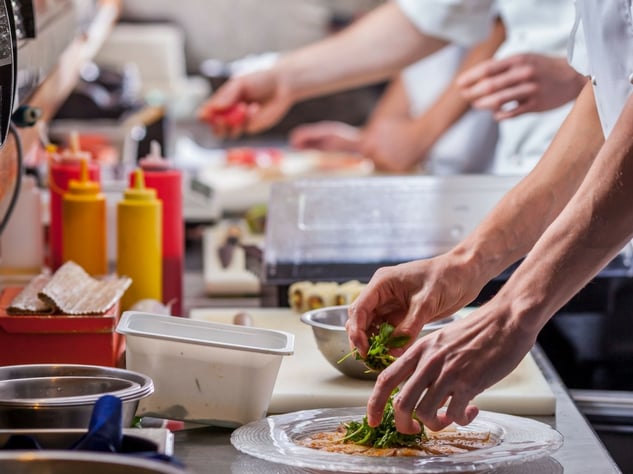
The path from your ingredient supply chain to your customer's plate is a winding one, with plenty of obstacles to overcome along the way. Balancing flavor profiles, designing an appealing menu, keeping both raw ingredients and finished dishes at the optimal temperatures — all that translates to a lot on your plate. If your kitchen is a well-oiled machine, your staff is the fuel that keeps it running, and many managers are so caught up with keeping issues like these at bay that they neglect the performance of that fuel. From sanitary best practices to sous vide, your employees should be able to handle it all without breaking a sweat, but what happens if untested staff is your only resource? There are three guidelines you'll need to incorporate into your operational approach.
Study what your high-performing competitors are doing.
Even within the same industry category — fast casual, fast food and so on — the best practices for one restaurant might spell disaster for another. If you're going to "take a page" from a rival, do so from one that closely resembles your own brand in feel, scale and menu. While some training programs are proprietary within a brand, using resources like e-learning courses can help standardize approaches within the kitchen, and cut back on miscommunication. The National Restaurant Association recommends recording food safety training progress and completion milestones in a centralized location, as well.
Don't try to reinvent the wheel.
While special food preparation and sourcing looks impressive on a finished menu, let your ingredients do the work for you prior to shipping out. Seek out supply chain partners that offer specialty ingredients or ones that incorporate complex preparations before ever shipping out. This gives you the depth of flavor and all the "bragging rights" you'd typically have to painstakingly guide your unseasoned workers to create. Options like heat-and-serve sous vide items require only a bare minimum of training to prepare, but offer a plate that reflects a great deal more effort.
Make sure you aren't getting in your own way.
If your newest staff members express confusion at your process, don't immediately assume they need more training. Your system — the way orders are entered, the way they're presented to kitchen staff, the availability of adjustments or corrections — may be in need of an overhaul. The longer your establishment or chain is in business, the greater the chance that unlikely scenarios will become labor-intensive workarounds as they pop up. Is the system you're working with the same one you put in place to begin with? What's changed since then?
Determining shifts in consumer demand and tastes isn't just a technique that can be used to revamp menus — it's useful for renovating order processes too. If you aren't sure how to start that process, ask yourself questions like these:
- Are reorders of popular ingredients automatically triggered? Could they be?
- Does my staff have a clear understanding of what to do if we run short on an ingredient?
- Do my kitchen employees feel comfortable suggesting improvements or changes? If not, how can I facilitate that? (The Huffington Post's Sophie Andrews suggests that listening to your employees could help improve your restaurant's bottom line.)
- Are written and/or video training modules available to address different learning styles? If not, how can I create them?
- Do I have an assessment schedule in place to examine how well my kitchen workflows are performing?
Additionally, internal kitchen tech —beyond your POS system — may be in need of an upgrade. Technology and food are very well matched, particularly when it comes to culinary innovations like sous vide or "smart" appliances. When your staff is able to pinpoint exactly when a dish or ingredient is ready to be served, you'll save money and time — no more scorched proteins and impatiently waiting customers. Without being caught in a constant loop of checking a pot or pan, your employees can spend valuable time training on manually-prepped items, like chopped vegetables. Technology like this is an investment, but it also helps your new staff members transition to the busy life of the kitchen that much faster.
Remember, untested employees need to learn and grow organically for the best results over time. As a food industry professional, the best thing you can do to expedite that process is to make sure that your kitchen environment is cleared of as many obstacles as possible.






